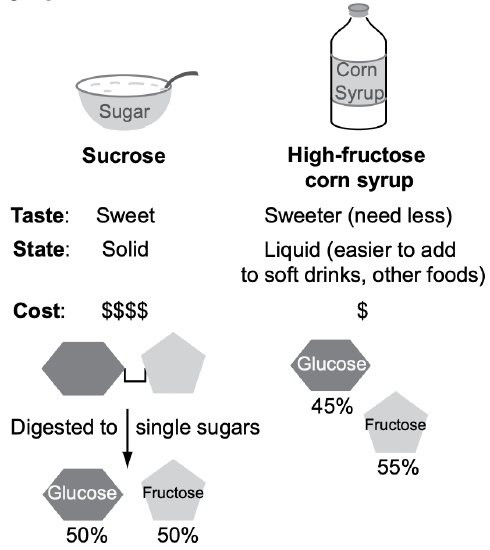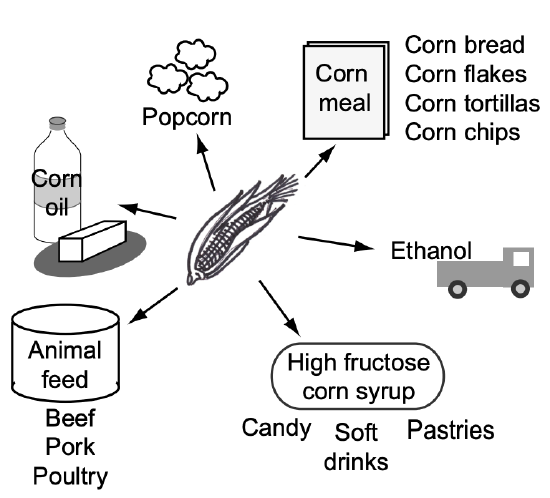4.6: Back to Sugar
- Page ID
- 56185
Some of the most cherished myths about food and health involve carbohydrates. For example, a common myth is that sugar is poison to our body. While sugar can cause tooth decay (discussed in the next chapter) and is often eaten in excess, it’s hardly a poison. All carbohydrates are absorbed from the intestine as single sugars.
Let’s suppose that we’ve just taken a bite of Thanksgiving candied sweet potato. Like virtually all foods, it has many components. It has a large number of chemical compounds, some of which play a role in nutrition and some of which do not. But since the chief nutrient substances in the dish are two classes of carbohydrates—starch in the potato, and sugar in both the potato and the candied topping—we can learn some principles by following a bite.
The starch and sugar in the sweet potato are digested to single sugars (monosaccharides) before they’re absorbed into the bloodstream (details of digestion will be discussed in Chap. 10.) Our sweet potato is now quite unrecognizable. Its usable carbohydrate is thoroughly broken apart into the single sugars, like the blocks of a child’s building set. For it’s only in very simple forms that nutrients can actually enter the bloodstream to take part in life processes.

We use the example of sweet potatoes. But whether we begin with Fruit Loops, organically-grown turnips, high-fructose corn syrup, or our sweet potato, what passes through our intestinal wall into our bloodstream is mainly glucose and fructose, with perhaps some galactose if milk is poured over the Fruit Loops.
Different foods release their sugars at different speeds, depending on particle size, fiber content, etc. Starch in brown rice, for example is digested slower than starch in white rice. Glycemic Index is a measure of how high a particular food raises your blood sugar. As you’d expect, jelly beans have a much higher Glycemic Index than pinto beans.
Once these sugars enter the bloodstream, their origin matters no more to the cells that will use them than do the origins of oxygen matter to the lung—whether from an ocean breeze, or a scuba tank. Glucose is glucose. Fructose is fructose.
Indeed, the next step is toward even greater simplicity. The blood coming from the intestine goes directly to the liver—and the final simplification of the sugars. Virtually all the single sugars which aren’t already glucose are converted by the liver into glucose.

If you’ve ever wondered why hospitals tend to provide caloric supplementation to patients by using only simple glucose (also called dextrose), the reason should now be clear. Ultimately, glucose is the sole carbohydrate used by most body cells for energy.


